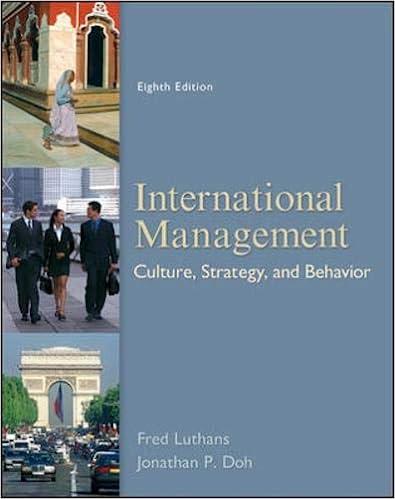Answered step by step
Verified Expert Solution
Question
1 Approved Answer
Exercise 4. Consider a two-period, two-country, endowment economy. Let one of the countries be the United States (U) and the other Europe (E). Households


Exercise 4. Consider a two-period, two-country, endowment economy. Let one of the countries be the United States (U) and the other Europe (E). Households in the United States have preferences described by the utility function In CV + In CV, where C and C denote consumption of U.S. households in periods 1 and 2, respectively. Europeans have identical preferences, given by In CF + In CE, where CE and CE denote consumption of European households in periods 1 and 2, re- spectively. Let Q and Q denote the U.S. endowments of goods in periods 1 and 2, respectively. Similarly, let QF and QE denote the European endowments of goods in peri- ods 1 and 2, respectively. Assume further that the endowments are nonstorable, that the 3 U.S. and Europe are of equal size, and that there is free capital mobility between the two economics. The United States starts period 1 with a zero net foreign asset position. 1. Symmetric Equilibrium Suppose that Q = Q = QF = Q = 10. Calculate the equilibrium world interest rate, and the current accounts in the United States and Europe in period 1. 2. US-Originated Contraction #1 Suppose that a contraction originates in the United States. Specifically, assume that Q drops from 10 to 8. All other endow- ments (Q, QF, and Q) remain unchanged at 10. This contraction in output has two characteristics: First, it originates in the United States (the European endow- ments are unchanged.) Second, it is temporary (the U.S. endowment is expected to return to its normal value of 10 after one period). Calculate the equilibrium interest rate and the current accounts of the United States and Europe in period 1. Provide intuition. 3. US-Originated Contraction #2 Consider now a second type of contraction in which the U.S. endowment falls from 10 to 8 in the first period and is expected to continue to fall to 6 in the second period (Q = 8 and Q = 6). The endowments in Europe remain unchanged at 10 each period (QF = Q = 10). Like the one described in the previous item, this contraction originates in the United States. However, differs from the one described in the previous item in that it is more protracted. Calculate again the equilibrium interest rate and the two current accounts in period 1. Point out differences in the effects of the two types of contraction and provide intuition. 4. At the beginning of the Great Recession of 2008, interest rates fell sharply around the world. What does the model above say about people's expectations around 2008 regarding the future path of real activity?
Step by Step Solution
There are 3 Steps involved in it
Step: 1

Get Instant Access to Expert-Tailored Solutions
See step-by-step solutions with expert insights and AI powered tools for academic success
Step: 2

Step: 3

Ace Your Homework with AI
Get the answers you need in no time with our AI-driven, step-by-step assistance
Get Started


